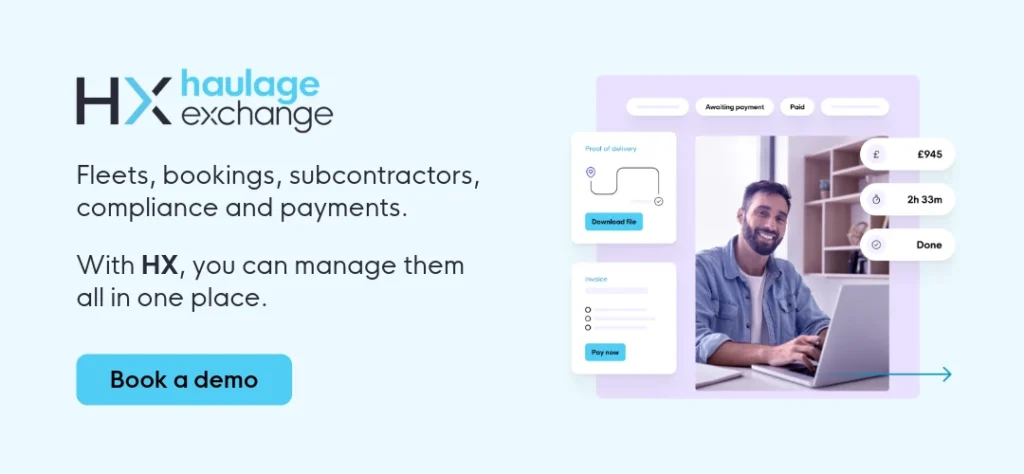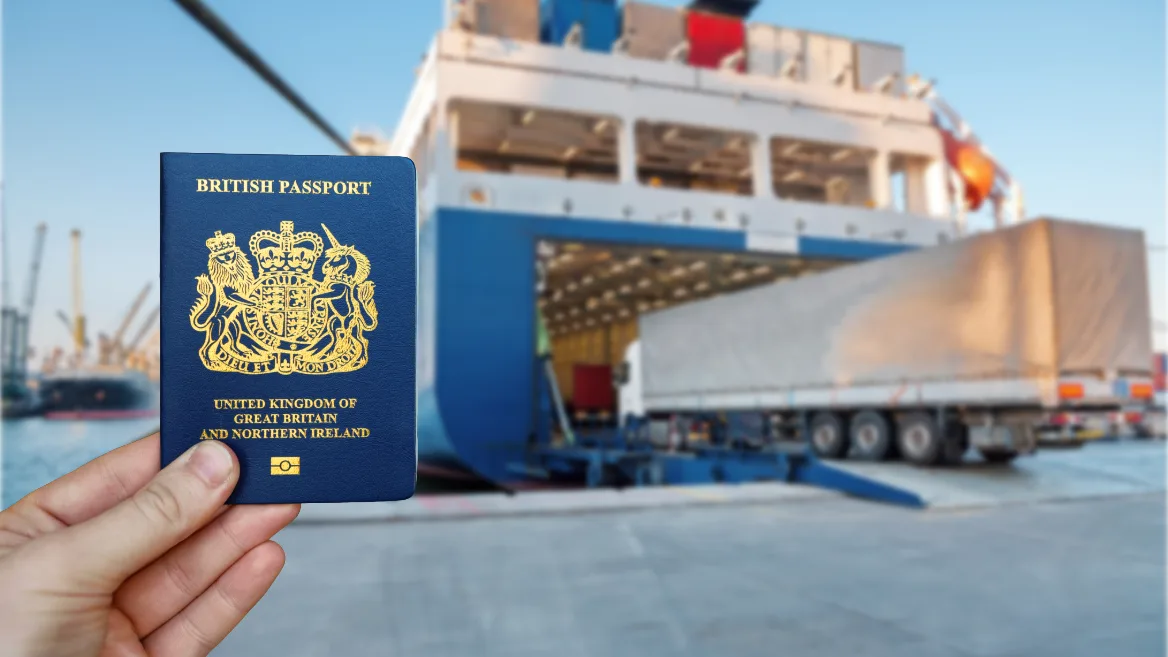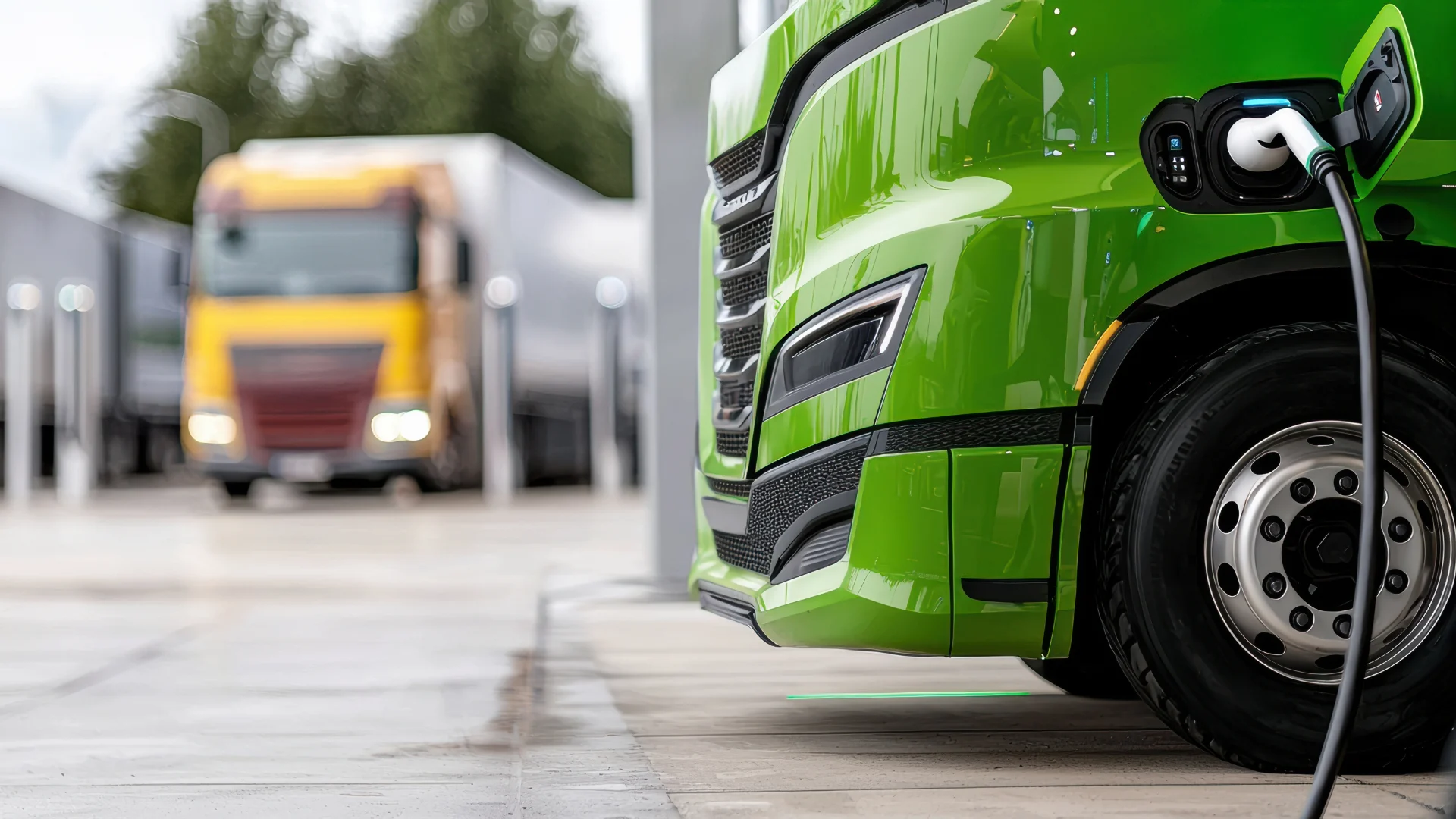On 12 October 2025, the European Union rolled out the Entry/Exit System, replacing passport stamping with biometric checks at Schengen borders.
For UK haulage companies, this change isn’t just another travel rule. It alters how drivers move goods across Europe and how schedules are planned.
Preparing early will help avoid late deliveries, customer complaints, and wasted time at ports.
What we’ll cover
Fleets, bookings, subcontractors, compliance & payments.
With HX, you can manage them all in one place.
What is the Entry/Exit System (EES)?
The EU’s Entry/Exit System (EES) is a new digital border tool designed to record entries and exits into Schengen countries. Instead of stamps, drivers will register fingerprints and a facial image – part of a wider EU plan to modernise border checks, tighten security, and reduce illegal overstays.
This process creates a digital record linked to the driver’s passport. The record also stores entry and exit times, location, and personal details. Once created, it remains valid for three years or until the passport expires.
There are exemptions:
- Drivers with EU residence permits.
- Diplomats.
- Children under 12 (no fingerprints, but photos still required).
The system also automatically checks compliance with the 90 days in 180 rule. UK drivers can’t spend more than 90 days in the Schengen area within any rolling 180-day period. Overstaying could mean fines or even bans.
If you’re familiar with the UK’s Electronic Travel Authorisation (ETA) visa system, EES works in a similar way. Both aim to replace outdated manual checks with digital records, making it easier to track movements and prevent overstays.
The difference is that ETA is a pre-travel authorisation for visitors entering the UK, while the EES is a border registration process that takes place when travellers arrive at, or depart from, the EU.
When and where does the Entry/Exit System start?
The Entry/Exit System launched on 12 October 2025, with a phased rollout until 10 April 2026.
- October 2025: Launch at selected borders. Freight and coach traffic processed first.
- November 2025: Wider rollout for other traveller groups.
- April 2026: Full enforcement at all Schengen borders. Manual passport stamps end.
The EES applies across 29 Schengen and associated states, including France, Spain, Germany, Italy, and Poland. It does not apply in the Republic of Ireland or Cyprus.
Where UK drivers will be checked
UK freight drivers will face the Entry/Exit System at different stages depending on the port.
At Dover and Folkestone, French border officials complete checks before departure, as these locations operate juxtaposed controls.
At other UK ferry terminals, drivers will complete registration on arrival at the EU port.
| Location | What drivers can expect | Impact on UK drivers |
|---|---|---|
| Dover | Kiosks in Western Docks or checks with border staff using tablets before boarding. | High volumes mean queues are likely, especially in the early months. |
| Folkestone (Eurotunnel) | New pre-registration area for biometric checks before boarding. | Delays possible as all accompanied freight traffic must pass through kiosks before entering the tunnel. |
| Hull | Checks take place on arrival at Rotterdam or Zeebrugge. | Drivers should allow extra time at the EU port. Lower traffic volumes may mean shorter queues. |
| Portsmouth | Checks on arrival at French or Spanish ports such as Caen, Le Havre, or Bilbao. | Longer sailings spread out arrivals, which may ease pressure but facilities could be limited. |
| Immingham & Killingholme | Registration on arrival in EU ports in the Netherlands, Belgium, or Germany. | Strong RoRo freight routes mean delays depend on EU-side infrastructure. |
| Liverpool | Routes mainly to Dublin (not in Schengen, so no EES) and via Irish connections into the EU. | No EES checks for Ireland, but drivers must complete EES if travelling onward into the Schengen area. |
| Newcastle | Checks on arrival at IJmuiden (Netherlands). | Passenger and freight mixed traffic may cause variable wait times. |
| Plymouth | Checks on arrival at Roscoff or Santander. | Seasonal services may mean lighter traffic, but facilities could still create bottlenecks. |
Why the EES matters for UK haulage companies
The Entry/Exit System affects every UK driver with a UK passport. Unlike EU passport holders, they must complete biometric checks.
The first crossing after launch will take longer. Drivers must scan their passport, provide fingerprints, and have a photo taken. Later journeys are quicker, needing only a scan and either a fingerprint or photo.
This matters for companies running tight schedules. Cross-border contracts often depend on just-in-time deliveries. Any delay at Dover or Folkestone can disrupt the entire supply chain.
The new system also enforces the 90/180-day rule without exception. Overstays are no longer hidden behind faint or missing stamps. For firms relying on international HGV drivers, this rule carries added weight. A ban could leave you short of drivers when you most need them.
Challenges and how you can prepare
The Entry/Exit System will reshape border checks for UK drivers. It brings risks of delays, compliance issues, and added pressure on operations.
But with the right preparation, haulage companies can reduce disruption.
Delays at ports: add buffer time to schedules
Freight drivers were among the first processed under the Entry/Exit System, as of 12 October 2025.
RHA and BIFA expect queues at Dover and Folkestone as drivers complete biometric checks. Even a short delay at kiosks can multiply into hours of waiting when thousands of vehicles are involved.
How to prepare
- Add extra time into schedules for Dover and Folkestone crossings.
- Adjust delivery windows to protect contractual obligations.
- Consider staggered departures to avoid peak queue times.
Driver scheduling: brief drivers and manage hours carefully
Biometric checks add minutes to every trip, and more on the first crossing.
These small delays can disrupt delivery slots and compliance with EU drivers’ hours rules.
How to prepare
- Brief drivers on what to expect: passport scan, fingerprints, photo.
- Ensure their passports are valid for at least 3 months.
- Use depot briefings, WhatsApp groups, or crib sheets to reinforce awareness.
- Monitor queue times closely so drivers don’t breach tachograph laws.
Inconsistent rollout: stay informed and flexible
Until April 2026, not all ports will use the Entry/Exit System consistently.
Some will still stamp passports, while others run EES fully, which may confuse drivers and disrupt planning.
How to prepare
- Assign someone in operations to monitor updates from GOV.UK, RHA, and BIFA.
- Share weekly updates with drivers so they know what to expect on different routes.
- Build flexibility into trip planning until rollout stabilises.
Infrastructure strain: plan for congestion at terminals
New reception areas and kiosks are being built at Dover and Folkestone, but space is limited. Smaller ports may face bottlenecks if facilities can’t handle demand.
This adds pressure to HGV driver management and depot operations.
How to prepare
- Prepare drivers to expect waiting time before kiosks.
- Encourage drivers to carry essentials for driver wellbeing during delays.
- Review depot scheduling to account for longer turnaround times.
Customer service pressure: communicate early and clearly
Queues and delays risk late deliveries, which can frustrate shippers.
Without clear communication, trust and haulage contracts could be at risk.
How to prepare
- Train customer service teams to explain the impact of border changes.
- Update contracts to cover delays caused by EES.
- Provide shippers with proactive updates using live vehicle tracking or customer portals.

What the industry is saying
The Road Haulage Association has warned that freight and coach drivers will face delays once the Entry/Exit System begins. They expect queues at Eurotunnel and Dover despite government investment.
The British International Freight Association has pointed that the success of rollout depends on French border staffing. Even with kiosks, shortages of trained officers could slow traffic.
To support the rollout, the UK Government has invested £10.5 million in infrastructure at Dover, Folkestone, and St Pancras. This includes new kiosks, reception areas, and processing zones. But industry bodies believe delays are still likely in the first months.
Looking ahead: EES and ETIAS
The Entry/Exit System is the first step in a wider change.
From 2026, the EU will launch the European Travel Information and Authorisation System (ETIAS).
EES vs ETIAS
| System | When it applies | What it does | Cost | Applies to |
|---|---|---|---|---|
| EES | 12 Oct 2025 | Records entries/exits + biometrics | Free | All non-EU nationals entering Schengen |
| ETIAS | Planned for 2026 | Pre-travel authorisation | €20 | Visa-exempt nationals (UK included) |
- UK drivers will need both ETIAS pre-clearance and EES border registration.
- EES tracks compliance with the 90/180-day rule, while ETIAS checks travellers in advance.
- This dual system raises planning demands for multimodal transport and may affect how firms approach hiring truck drivers from outside the EU.
Wrapping up
The Entry/Exit System is a major shift for UK haulage. It brings biometric checks, stricter rules, and likely delays.
Companies that prepare now can reduce disruption. That means training drivers, adjusting schedules, updating contracts, and keeping shippers informed.
Like adapting to driver wellbeing measures, or changes in compliance rules, planning ahead will help the industry adjust. The Entry Exit System will eventually become routine, but readiness in 2025 will set companies apart.
Frequently asked questions
What is the EU Entry/Exit system?
The EU Entry/Exit System (EES) is a digital border check that replaced passport stamps from 12 October 2025. It records passport details, biometrics, and travel dates for non-EU nationals, including UK drivers. First checks take longer, but repeat trips are quicker.
How does the Entry/Exit System work for UK drivers?
On the first crossing after 12 October 2025, UK passport holders must scan their passport, provide fingerprints, and have a photo taken. Later trips only need one biometric check.
Does the Entry/Exit System apply at every EU border?
Yes. Once fully operational, it applies at all external Schengen borders. Ireland and Cyprus are excluded.
Will the Entry/Exit System slow down freight crossings?
Yes, especially at Dover and Folkestone during the early months. Queues are expected as drivers register for the first time.




